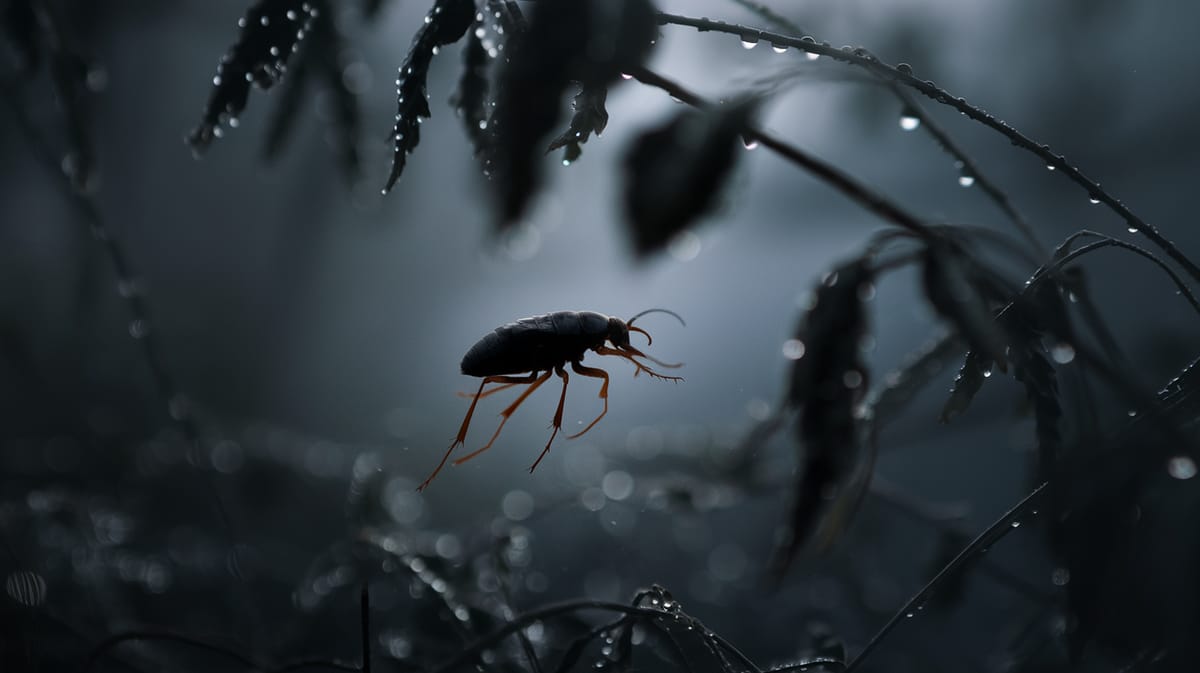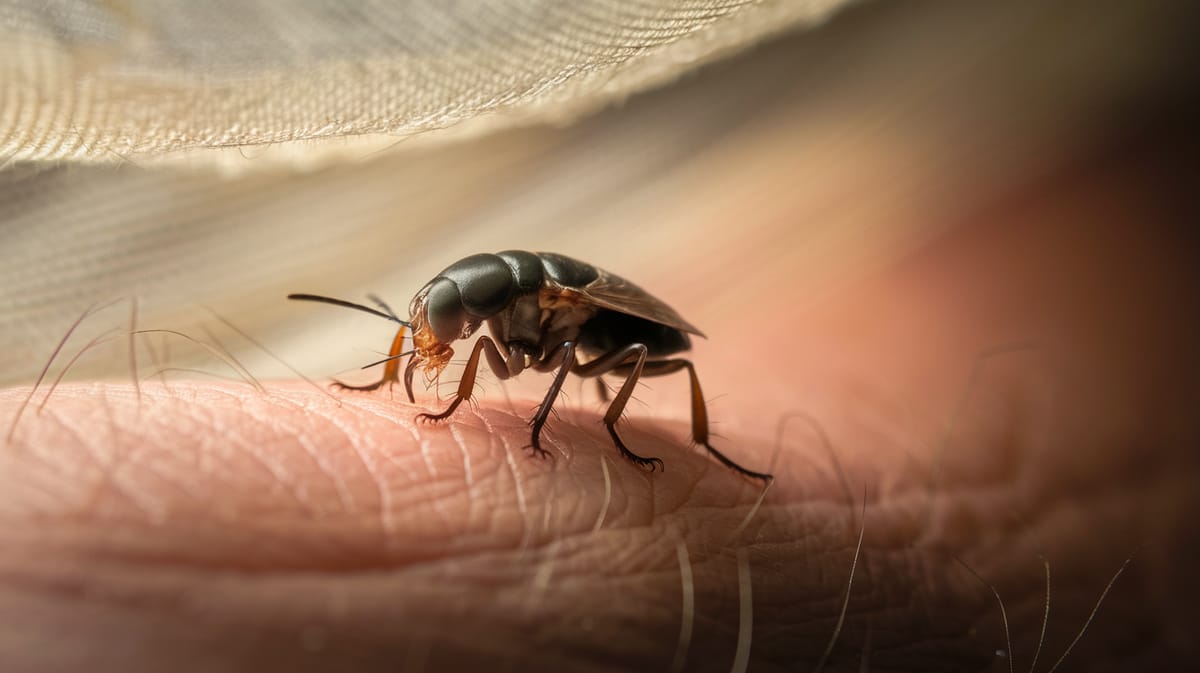Black Plague Flea
Carriers of history and disease, the Black Plague Fleas are infamous for their role in spreading the Bubonic plague. These tiny insects showcase adaptability and survival in diverse environments.

Key Insights at a Glance
Did You Know?
Taxonomy & Classification
The Black Plague Flea, equipped with specialized mouthparts for piercing and sucking, played a notorious role in history by spreading the bubonic plague. Let's understand the evolutionary journey and classification of these remarkable parasites.
Global Distribution
The genus Xenopsylla includes about 30 species, thriving in various regions, particularly in warmer climates across Africa and Asia.
Ancient Origins
Evolving millions of years ago, fleas adapted to parasitic lifestyles, surviving through significant ecological changes and contributing to human history.
Lifecycle and Growth
A remarkable journey of transformation from Egg to Adult.
Egg
Tiny, oval eggs are laid in host nests or shelters, quickly hatching under optimal conditions, contributing to rapid population growth.
Larva
Blind, worm-like larvae consume organic debris and flea feces, preparing for transformation by entering a cocoon-like state.
Pupa
Encased in a sticky cocoon, the pupa undergoes metamorphosis, transforming into an adult flea, ready to emerge.
Adult
Fully developed, adults seek hosts for blood meals, essential for reproduction and continuation of the species.
Dietary Habits
A minute parasite, this insect primarily targets mammalian blood, adeptly adapting to host availability and environmental conditions.
| DIET TYPE | DESCRIPTION |
|---|---|
| Primary Diet | Relies mainly on the blood of rodents, particularly rats, using specialized mouthparts to feed. |
| Secondary Diet | Occasionally feeds on human blood when primary hosts are scarce, contributing to disease transmission. |
| Occasional | Rarely consumes bird blood, typically during mass animal migrations or local scarcity of preferred hosts. |

Behaviour and Adaptations
Discover the fascinating traits that enable the Black Plague Flea to thrive as a formidable parasite.
Jumping Agility
Exceptional leaping ability helps it quickly move between hosts.
Blood Feeding Efficiency
Highly specialized mouthparts allow effective blood extraction from hosts.
Disease Transmission
Capable of efficiently spreading pathogens like Yersinia pestis.
Ecosystem Impact
Understanding how Black Plague Fleas contribute to ecological balance.
Disease Vector Control
Influences host population dynamics by spreading pathogens, impacting species distribution.
Nutrient Recycling
Contributes to nutrient cycling through organic matter breakdown.
Biodiversity Influence
Indirectly supports diverse predator species by affecting prey availability.
Conservation Challenges
Understanding and addressing the major threats to Black Plague Flea populations.
Chemical Exposure
Pesticides disrupt flea populations and ecosystems.
Habitat Loss
Urbanization reduces flea habitats, impacting survival rates.
Climate Change
Altered temperatures affect flea breeding and distribution.
Frequently Asked Questions
How long do Black Plague Flea live?
Black Plague Fleas, or Oriental rat fleas, typically live for about two to three months. Their lifespan depends on factors like environmental conditions and the availability of a host. Without a host, their survival time significantly decreases.
What do Black Plague Flea eat?
Black Plague Fleas primarily feed on the blood of mammals, especially rodents like rats. They are external parasites that require a host to survive and reproduce. They can also bite humans if their preferred hosts are unavailable.
Are Black Plague Flea poisonous?
Black Plague Fleas are not poisonous, but they are vectors for diseases, most notably the bubonic plague, caused by the bacterium Yersinia pestis. Their bites can transmit this bacterium to humans and other animals.
Are Black Plague Flea endangered?
Black Plague Fleas are not considered endangered. They are widely distributed and adapt well to various environments, especially where their rodent hosts are plentiful. Their population is stable, largely due to their association with human settlements and wildlife.
What do Black Plague Flea symbolize?
The Black Plague Flea is often associated with the bubonic plague, symbolizing disease, death, and pandemics in historical contexts. Their role in the spread of the plague during the Middle Ages has left a lasting impression on human history and culture.
Do Black Plague Flea bite?
Yes, Black Plague Fleas do bite. They feed on the blood of their hosts, which includes rodents and sometimes humans. Their bites can cause itching and irritation and can transmit diseases if the flea is infected.
What color are Black Plague Flea?
Black Plague Fleas are typically dark brown to reddish-brown. Their color can help them blend into the fur of their rodent hosts, providing them with camouflage and protection from predators while they feed.
Does a Black Plague Flea have wings?
No, Black Plague Fleas do not have wings. They are wingless insects that rely on their powerful legs to jump long distances, allowing them to move quickly between hosts or escape threats.
What does a Black Plague Flea look like?
Black Plague Fleas are small, wingless insects with flattened bodies that help them navigate through the fur of their hosts. They have long legs adapted for jumping and piercing mouthparts for feeding on blood.
Is a Black Plague Flea an insect?
Yes, the Black Plague Flea is an insect. It belongs to the order Siphonaptera, characterized by wingless, blood-feeding parasites. As insects, they have a three-part body structure: head, thorax, and abdomen, and six legs.
Related Insects
Discover insects with similar characteristics to Black Plague Flea - including shared habitats, diets, and taxonomic classifications
Share this profile
Help others discover Black Plague Flea
